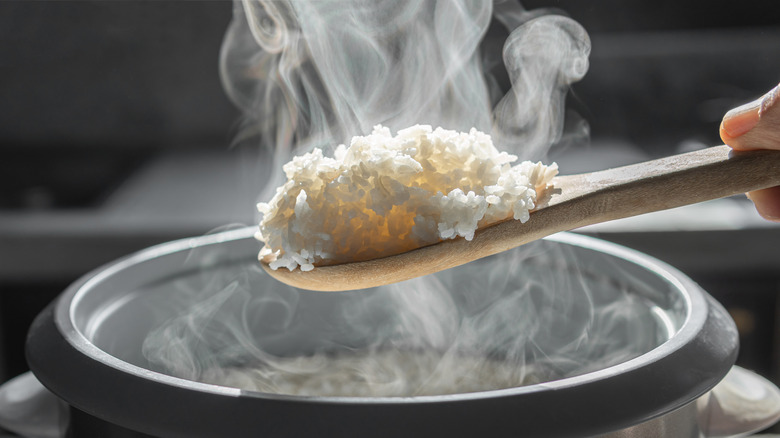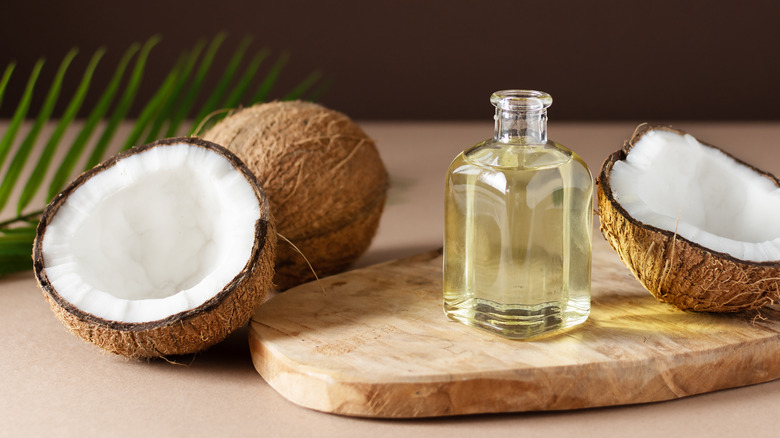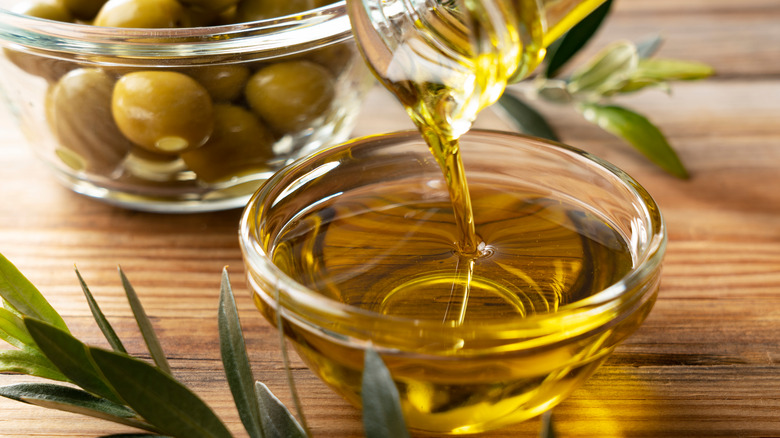The Benefits Of Adding Oil To Rice
From white rice to brown rice and long grain rice to short grain rice, preparing a perfectly steamed pot that's both soft and chewy isn't necessarily foolproof. As a staple food in cultures around the world, rice is prepared differently everywhere you go. Depending on the type of cuisine, your rice could be sticky and sweet or light and fluffy. And with the simple adaptation of seasonings, you could go from serving it alongside a staple curry dish for dinner to using the leftovers for a rice pudding dessert in a matter of minutes.
Given the grain's adaptability and its role as a staple food for billions of people (via National Geographic), it's no wonder why rice can be found virtually anywhere. But with all of its different styles of preparation, there's one simple ingredient that, in its many forms, has been found to not only add flavor to your rice but also prevent stickiness and cut the calores. By infusing your rice with different types of oils, you can personalize your rice preparation to deliver in ways that are most beneficial to you and your taste buds.
Cut calories with coconut oil
Despite the villainization of cooking with coconut oil for its high levels of saturated fats, it has a similar nutrition profile to other cooking oils. Even though saturated fats are typically associated with high cholesterol, not all are created equally. In fact, there's something especially unique about the kind that is found within the oil of coconuts. Because coconut oil is high in lauric acid, Harvard Health says that one of its benefits is its ability to boost beneficial HDL cholesterol, which could neutralize any of its potentially negative effects and make it a more heart-friendly replacement for butter.
Additionally, coconut oil has a unique ability to transform the starches in rice. Rice is made up of both digestible and indigestible starches, but scientists at the American Chemical Society discovered a way to use coconut oil to convert the indigestible starches that are found in rice into resistant starches that aren't digested in the small intestine. With just a ½ teaspoon of coconut oil per every ½ cup of rice, the oil will change the grain's starch architecture so that it is resistant to the digestive enzymes in your body. As a result, 50 to 60% fewer calories are absorbed into your body.
Use olive oil to prevent stickiness
Similar to it's use in cooking both chickpea pasta and regular pasta, olive oil is a useful ingredient when preparing your rice. Not only will a teaspoon of nice olive oil add a wonderfully bright and earthy aroma to an otherwise plain grain, but it will also help keep your rice from becoming too sticky. While sticky rice is ideal when creating sushi at home or eating with chopsticks, some dishes like curry or stir fries do better with rice that has a lighter and fluffier consistency.
As eHow explains, when you add a dribble of olive oil to the boiling water of your rice, it will slowly absorb into the grains as they cook. When finished, not only will your rice have the added moisture and flavor from the oil, but Good Cooking Guide says that the oil will act as a coating around each rice grain and prevent them from sticking to one another. So, no matter which type of olive oil you use, you can thank it and say goodbye to mushy, flavorless, and textureless rice for good.


